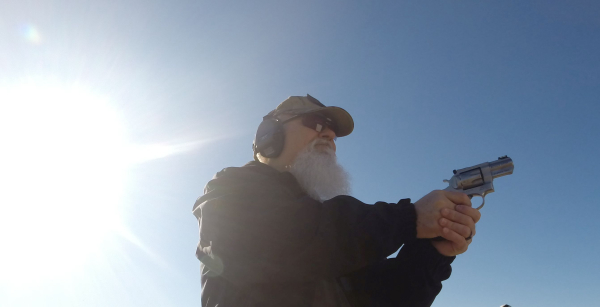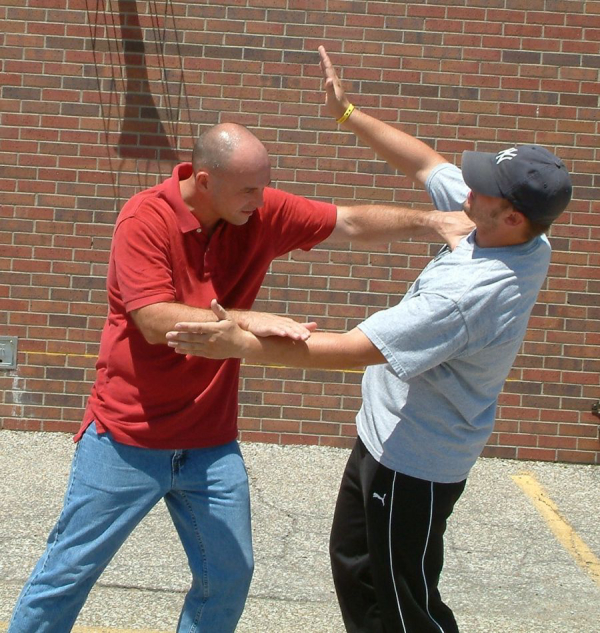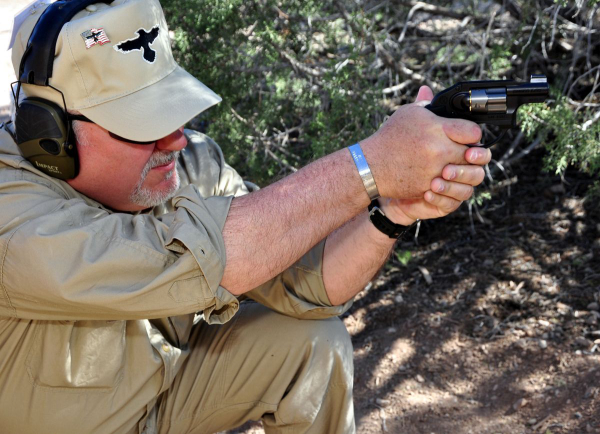
A worthy patron of the internet elected to instruct certain of us on a social media site regarding personal combat with handguns. Among other things, he noted that the “FBI data” demonstrated that the “vast majority” of shooting confrontations happen “within six yards.” He admitted that, at twenty feet, he can put a hit from his snub in the “abdomen” of a silhouette target … in less than a second … not sure if that’s from gunpoint, guard or a holster – worn indiscreetly or concealed.
“I don’t even look at my sights …” he noted, concluding with a caveat he’d never been trained, not a mil vet, not LE.
Like a little kid “whistling past the graveyard.”
Okay. I guess so. I’m not sure where all the myths and fantasies come from, but they’re recurring, like bad public policy, dishonest politicians, propagandist media and bad weather. Suffice to say, his is not a universal experience and it’s too bad that it’s taken as gospel by the unknowing. I’m a recipient of the vitriol of caliber commandos, those who chase the elusive “split time” and who have profound preferences for certain firearms and distain for others, so I look at such pronouncements skeptically.
Perhaps we should consider all of this in segments and deal with it.
Operating from a false premise:
First, that whole FBI thing … without going into the current political FBI and all the deep state shenanigans, what do they actually measure? Check what the Tactical Professor said here –
“Unfortunately, the FBI does not gather information about distance of gunfights in routine submissions to the Uniform Crime Reporting (UCR) Program. The only information on distances is gathered as supplemental data in cases where police officers are actually killed.”
Now, that’s not very helpful. You’re telling me how we lost – we can see it’s from lack of awareness of danger and proximity; you’re close enough to be touched (hit, stabbed, sliced, shot) before you’re aware there’s even a fight …
That’s a problem.


Trying to get a gun when you should be moving:
Let’s move on to the whole gut-shooting thing at blazingly fast, untrained speed. Going back to our Professor, in another source, “One of trends that is apparent in the Categorical Use of Force Reports by the LAPD is how often one or two shots solve the problem.”
“In a gunfight, the shooter who first scores a hit above the diaphragm of his opponent is the one who seizes the initiative in the incident (emphasis added). Making a good hit with the FIRST SHOT fired is key to seizing the initiative and then retaining it until the incident is over.”
As past contributor Dave Spaulding noted in another piece, “What Really Happens in a Gunfight? – found here – not only did the whole “FBI data” trope fail, but a study in the lamented Police Marksman showed that the distances were further when cops prevailed – indicating that they determined there could be a problem and didn’t close unnecessarily – and that “the hit ratio per encounter was closer to 62 percent instead of the often-reported 18 percent. The history of gun fighting for more than a century has shown that the person that lands the first solid hit will usually win the confrontation.”
It's anticipating danger, putting yourself in a position of situational dominance and controlling distance and obstacles.


“That’s fine for a cop on a call,” you might say. True, but being suspicious and watchful really helps seeing the problem before you own it. And if it doesn’t feel right, it likely isn’t right.
If you’re within six yards, 18 feet, that’s very close. How close?
Let’s consider standard length of step in “quick time,” the marching cadence, cited in my old version of Army FM 22-5 (Drill & Ceremonies): “A step of 30 inches; the length of the full step in quick time. ... The steps in quick and double time are 30 and 36 inches, respectively.”
Eighteen feet is 216 inches; just over seven steps … but when pacing off for distance, using the old double time length of step (36” – one yard), it’s six steps – of course. It can be a lunge – and at three yards, 36”, you’re close to arm’s reach … a convulsive clutch of a grip on the gun and slamming the trigger will likely get hits … somewhere. But you’re taking hits at the same time.
The gun is like a television remote control; it allows you to adjust channel and volume from your recliner. In my day, I was the family remote control. “Change the channel,” I’d be told and off I went.
If you’re within arms’ reach of the controls, you don’t need a remote. Besides, getting that gun out in time when you’re not really prepared for a shooting is trouble. You’re in “hands-on” territory. The quickest weapons to access are your hands. That’s Craig Douglas Shiv Works-land, not gun-land.
A “remote control” kind of day:
Get it straight. The FBI doesn’t compile ‘gunfight statistics.’ Our data is mostly from their “Officers Killed Summaries,” the NYPD SOP-9 reports, the LAPD Board of Commissioners’ reports (online) and from independent trainers.
And snub revolvers, properly handled, work very well from some considerable range. Distance is our friend; as more than one colleague has noted, it “favors the trained.”
There it is: the training element. Consider training as education – learning – plus dedicated practice. It’s not as much fun as simply doing a ‘mag dump’ or the revolver equivalent. It’s work.
The snub revolver is easy to carry, it can be drawn and fired quickly – almost ‘naturally’ – if you’ve gotten the reps in. It is also quite capable at substantial distances, as I demonstrated on the “Scrambler” at Gunsite Academy, using the then-new Ruger LCR.
The gun will do if you will. It’s an extension of your will and depends on your skill. It’s a worthwhile journey.
Don’t take the shortcut.
-- Rich Grassi